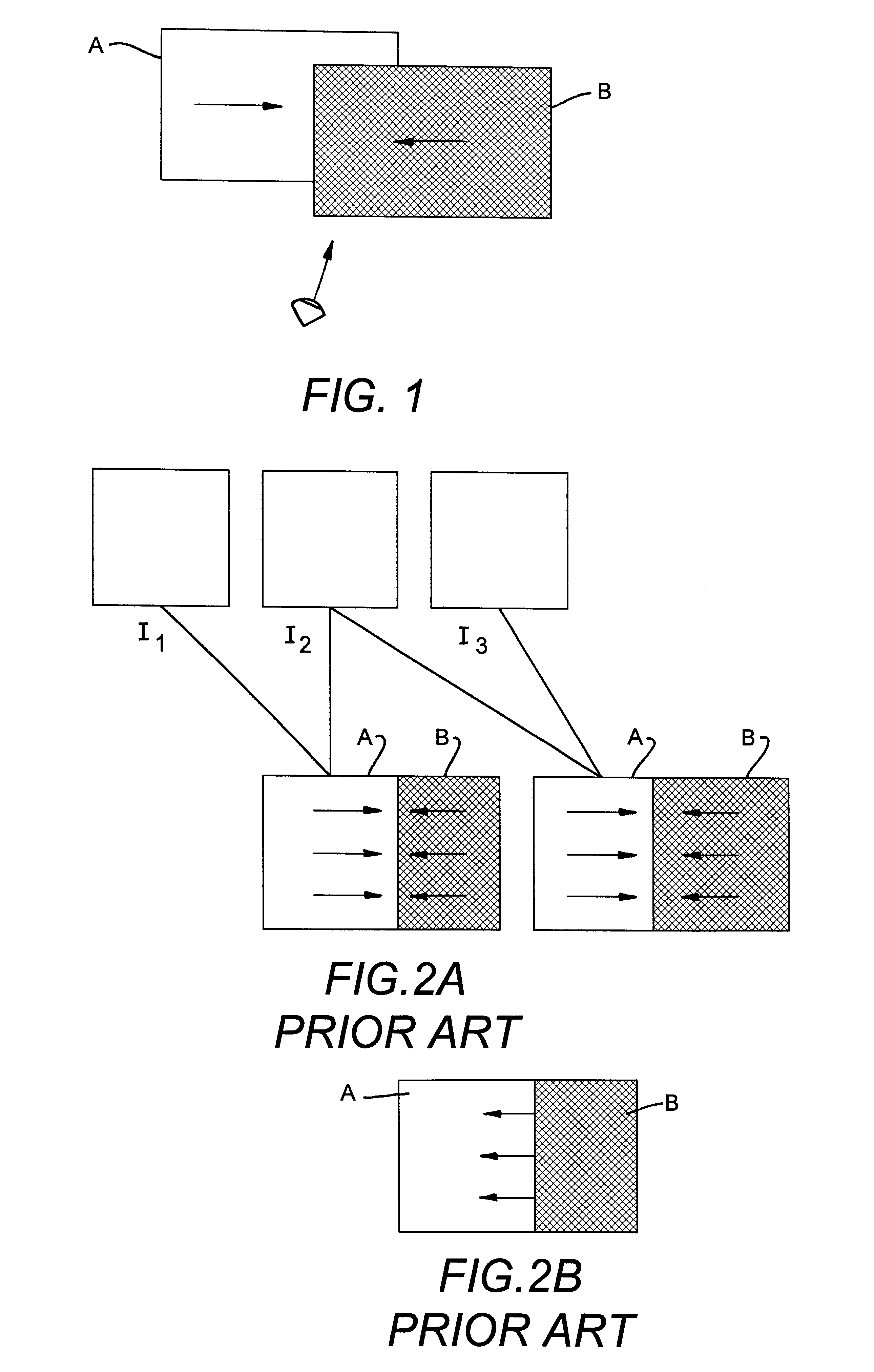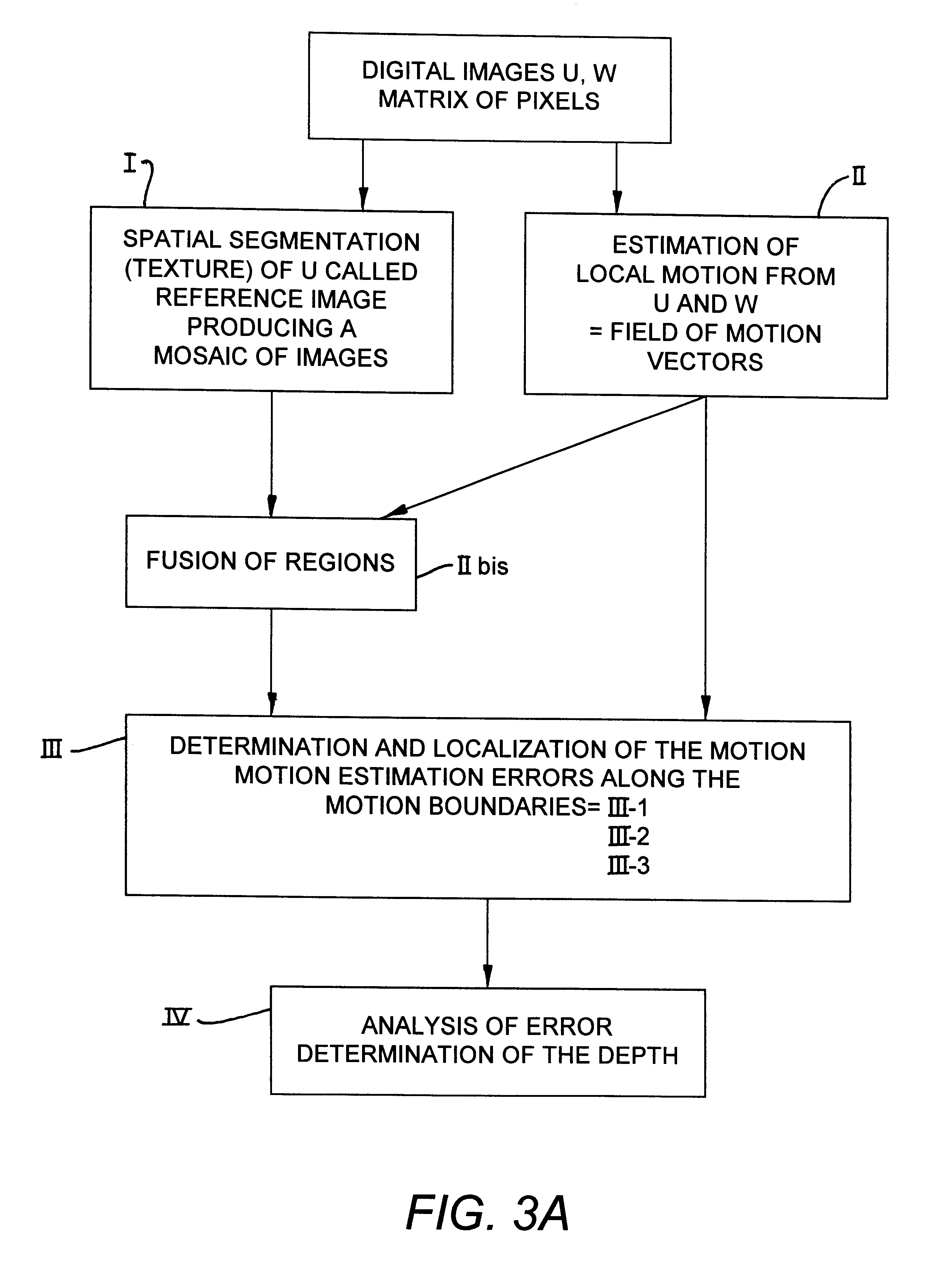Method for the detection of the relative depth of objects in an image from a pair of images
a technology of image and relative depth, applied in image data processing, television systems, instruments, etc., can solve the problems of insufficient segmentation information to deduce, additional delay in analysis, and lack of precision
- Summary
- Abstract
- Description
- Claims
- Application Information
AI Technical Summary
Problems solved by technology
Method used
Image
Examples
Embodiment Construction
The method according to the invention can be implemented by means of a program loaded into a microcomputer in order to implement the different steps that shall be described hereinafter or by means of an electronic device designed for this purpose.
The microcomputer (not shown) could be connected to one or two cameras making it possible to obtain two different shots of the scene U, W that are used as input data in the processing sequence that follows and take the form of matrices of pixels after digitization.
It is of course possible instead to have audiovisual equipment with a processing unit and pre-recorded images.
For a clearer understanding of the rest of the invention, reference will be made to FIGS. 3A-3C and 4 and 5A, 5B.
FIG. 3A illustrates the sequence of processing operations.
This sequence has two parallel processing sets, of which one I enables the obtaining of a spatial segmentation of one of the images, for example the image U, which shall hereinafter be considered to be th...
PUM
 Login to View More
Login to View More Abstract
Description
Claims
Application Information
 Login to View More
Login to View More - R&D
- Intellectual Property
- Life Sciences
- Materials
- Tech Scout
- Unparalleled Data Quality
- Higher Quality Content
- 60% Fewer Hallucinations
Browse by: Latest US Patents, China's latest patents, Technical Efficacy Thesaurus, Application Domain, Technology Topic, Popular Technical Reports.
© 2025 PatSnap. All rights reserved.Legal|Privacy policy|Modern Slavery Act Transparency Statement|Sitemap|About US| Contact US: help@patsnap.com



